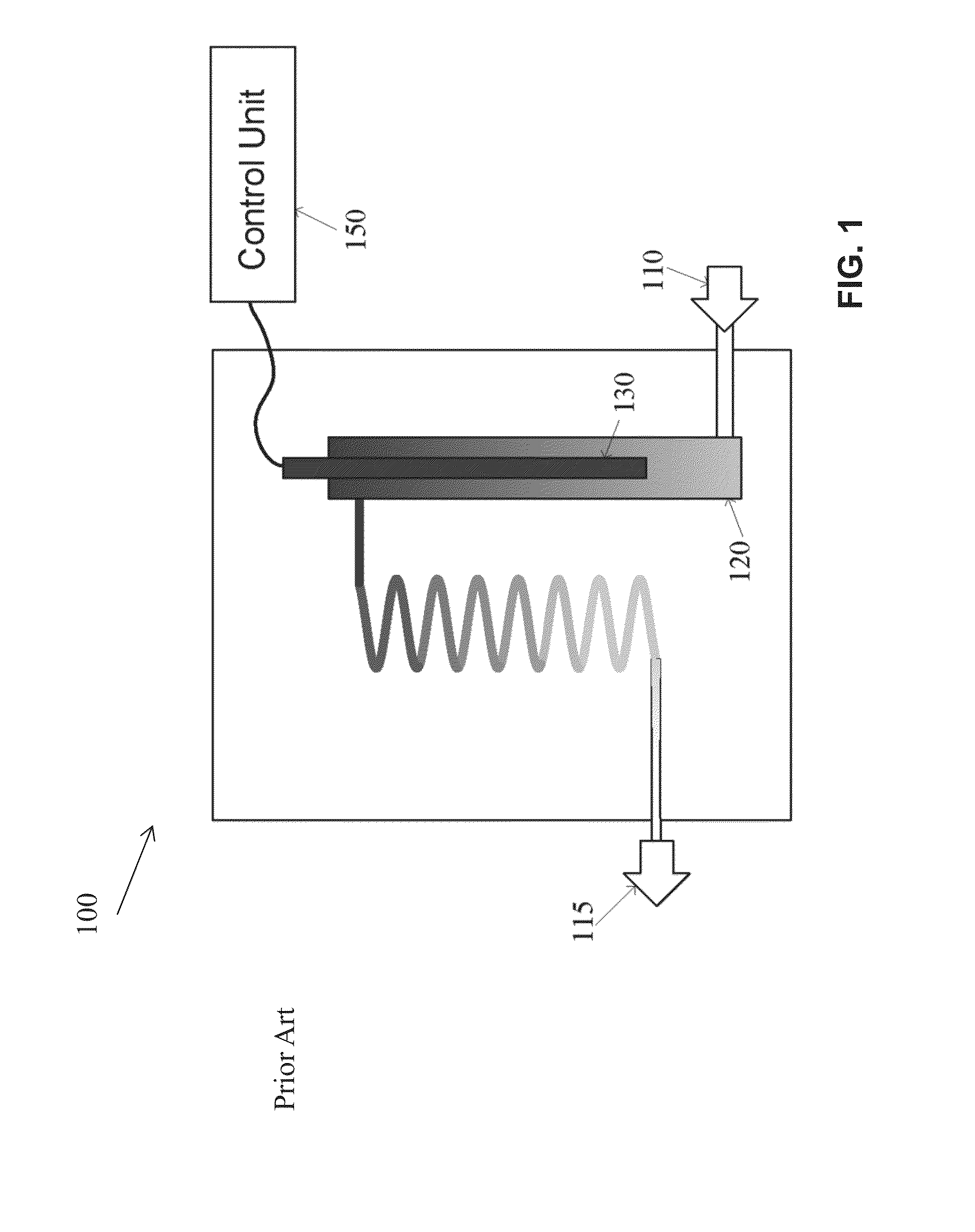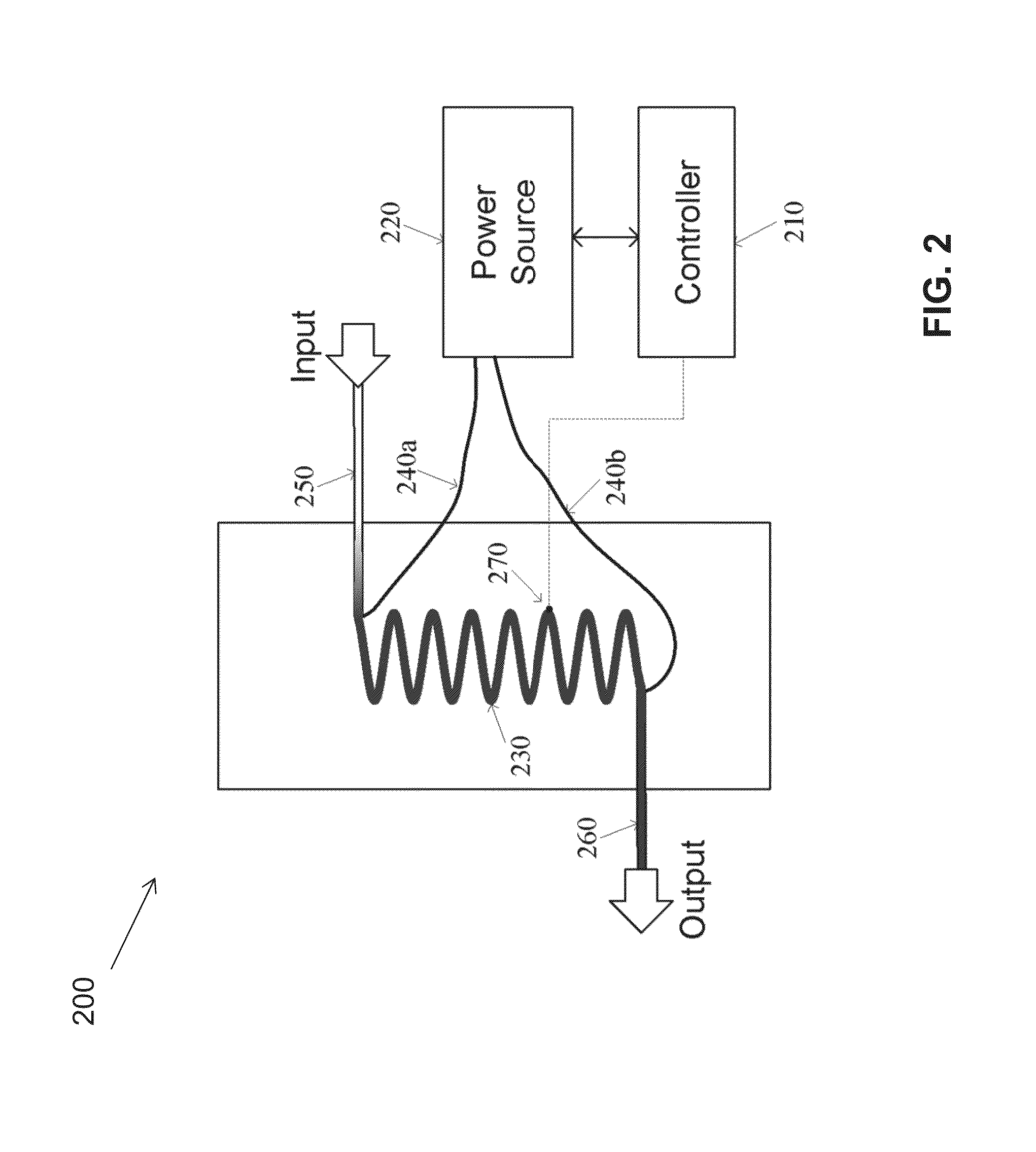Method and Apparatus for a Directly Electrically Heated Flow-Through Chemical Reactor
a flow-through chemical reactor and flow-through technology, which is applied in lighting and heating apparatus, separation processes, combustion types, etc., can solve the problems of non-uniform heat distribution to the chemical substance, harm to the environment, and deformation of ozone gas into oxygen, so as to reduce size and/or cost, the effect of uniform heat distribution and short heating tim
- Summary
- Abstract
- Description
- Claims
- Application Information
AI Technical Summary
Benefits of technology
Problems solved by technology
Method used
Image
Examples
Embodiment Construction
[0029]Generally, the invention includes directly coupling an electrically conductive member (e.g., a metallic tube) and a power source. The electrically conductive member is capable of retaining a chemical mixture therein. The power source applies power to the electrically conductive member. The electrically conductive member heats up as a result of the applied power. The electrically conductive member has an interior region that allows for a chemical mixture to flow therethrough.
[0030]When a chemical mixture is disposed within the interior region of the electrically conductive member and power is applied, the heat generated in the electrically conductive member transfers to the chemical mixture causing the chemical mixture to be heated. A portion of the electrically conductive member can be cooled. The cooled portion of the electrically conductive member can cool the chemical mixture flowing through the electrically conductive member. The chemical mixture can be cooled, in one embo...
PUM
| Property | Measurement | Unit |
|---|---|---|
| temperature | aaaaa | aaaaa |
| temperatures | aaaaa | aaaaa |
| length | aaaaa | aaaaa |
Abstract
Description
Claims
Application Information
 Login to View More
Login to View More - R&D
- Intellectual Property
- Life Sciences
- Materials
- Tech Scout
- Unparalleled Data Quality
- Higher Quality Content
- 60% Fewer Hallucinations
Browse by: Latest US Patents, China's latest patents, Technical Efficacy Thesaurus, Application Domain, Technology Topic, Popular Technical Reports.
© 2025 PatSnap. All rights reserved.Legal|Privacy policy|Modern Slavery Act Transparency Statement|Sitemap|About US| Contact US: help@patsnap.com



